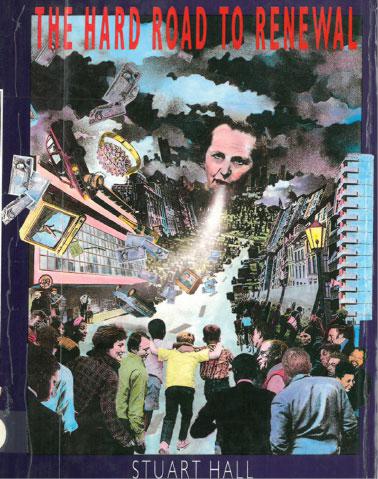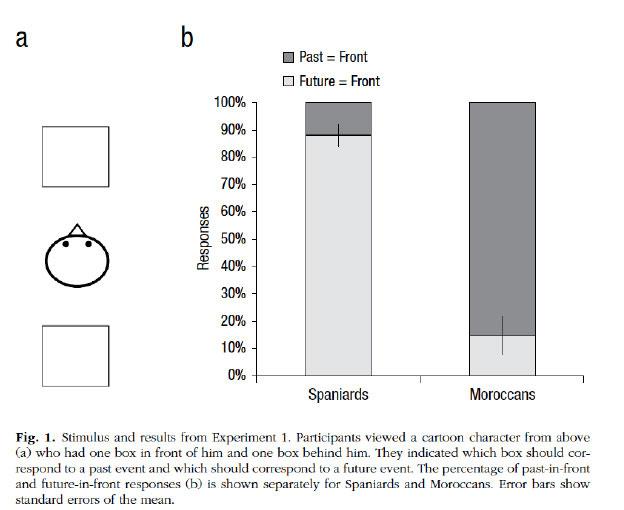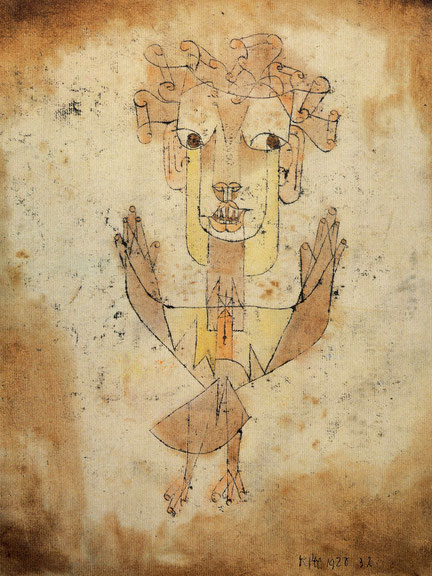“Scenarios of ‘crisis’ have an honoured place in the Marxist tradition but thinking them strategically, conjuncturally and politically, has not been a notable area of success.”1 This observation by Stuart Hall implies a criticism aimed at a topic central to this symposium: history, and, in his view, its misconception in Left politics. In his 1988 book The hard road to renewal: Thatcherism and the crisis of the left, Hall repeatedly comes back to this point, with a number of observations that are just as pertinent to the historical situation he analyses as to our present situation:
“We go on thinking a unilinear and irreversible political logic, driven by some abstract entity we call ‘the economic’ or ‘capital,’ unfolding to its preordained end. Whereas, as Thatcherism clearly shows, politics actually works more like the logic of language: you can always put it another way if you try hard enough.“
Or, we may add, one week into the new US administration and “alternative facts”, you don’t even need to try hard at all. Within the context of Hall’s criticism, a gap is opened between History – with a decidedly capital H – and its narration, depiction, and interpretation – that area, where history is shaped and made, where crises obtain their form. As we have become accustomed to reminding ourselves, this field has experienced a number of severe setbacks within the last decades: the grand narratives of Modernism (each carrying their own crises with them since their emergence) have fallen apart, deconstructed by the “three critiques”, in Helmut Draxler’s terms (postcolonial critique, feminist critique and historiographical critique),2 and with their erosion came that of the models of subjectivity, agentiality and historiography entailed in them. The end of historiographical visions linking past, present and future which were capable of molding visions of historical progress and bringing them into form have been, it seems, irretrievably lost, and this loss may well be experienced as catastrophic. As Ernesto Laclau has noted in a review of Derrida’s Specters of Marx, “We can do away with the teleological and eschatological dimensions, we can even do away with all the actual contents of the historical messianisms, but what we cannot do away with is the ‚promise,’ because the latter is inscribed in the structure of all experience.“3
This points to a specific model structured along experience and expectation that, again, points to the double nature of history, which is the foundation of models of progress. But Laclau’s plea for ‘promise’ must be sharply accentuated in order not to lead back to the historiographical trap brought forward by Stuart Hall – which would imply delegating agentiality to the “course of history”, either to a vague hope that “history will turn our way”, or to the conviction that things are lost anyway. Instead, Hall warns us, with Gramsci: “you must turn your face violently toward things as they really are.”4 If catastrophe, rather than crisis, has not only befallen the grand narratives of Modernism, but has shaped recent political experience, then the catastrophic erosion of historiographical models may actually force us, as Hall argues, to reclaim a presence of agentiality.
I Turning your face violently toward things as they really are
Turning your face toward things: This would seem to require a clear sense of orientation. In the fall of 1815, Rahel Varnhagen wrote to her husband Karl August von Ense, in a state of intense agitation stemming as much from an emotional reading of one of Goethe’s poems as of the experience of having three drunken Russian soldiers hammer at her door the evening before:
„Alas, August, what is happening to our life, to its visual appearance of time! One thought will soon break my head apart: that we are not headed towards the future, that it does not lie ahead of us, but instead streams over our heads from behind. How is one to defend oneself against that?“5 (Rahel Varnhagen to Karl August Varnhagen, Frankfurt, October 11th 1815, half past four in the afternoon.)
Having the future streaming over her head from behind: this is a vivid image, and it is one that I have identified with several times last year. It is striking that Rahel was primarily concerned with the “visual appearance of time”: not only with what was actually happening in 1815 as how these events somehow transformed the shape of time. Her poetic breaking point was reached when she felt unable to anticipate and experience the present. Things only reached her as having already happened, or as happening before her eyes but in the past. Her back side, unequipped with any sensory apparatus, turned to the future, she had lost the ability to sense the course of history in time; and, with her senses went also the right sense or orientation within it.
In modern terms, this numbness and inability to consciously move in time, could be described as shock, and it must have been a catastrophic experience for someone deeply rooted in enlightenment concepts of history and history-making. How can you face things as they really are if your face is turned away from what Rahel thought was the “right sense” of history: forward?
When I first read this passage in early summer, shortly after Brexit and some bad news concerning our own presidential elections, I started wondering: If the future suddenly was “streaming over her head from behind”, had Rahel – and her contemporaries – turned around, turned their backs towards time? Or was time suddenly coming from the wrong direction?
I eventually recognized that this focus on orientation was rooted in a linear conceptualization of time that would soon reach its limits. In order to get close to the core of Rahel’s catastrophic nightmare, I propose to enlarge the scope and add another question to the first one: is time moving, or are we?
II Is time moving, or are we?
In most European languages, conceptions of time are oriented alongside perceptuomotor interactions with the physical world: we are moving through time as we are moving through space, with the future ahead and the past behind us. Our limbs follow in direct response to our perception – this is what makes Rahel’s sudden immobility so devastating: if we cannot sense the future, we have lost the capacity to move in, or with, time.
Studies in intercultural communication have shown different patterns for Malagasy (which is one of the official languages of Madagascar) and for some Andean languages, patterns that point to different conceptions regarding the sense of time. As a 1995 study shows, other than in most European, and indeed most global languages, in Malagasy the past is designated as “in front of the eyes, before”, because it is known, while the future is “behind”, and, “none of us have eyes in the back of our heads”.6 Another, Spanish, study published in 2014 has observed similar patterns in the gestures and time conceptions of several Arab populations, which may follow future-in-front-metaphors in speech, but actually place the past in front and the future behind.7
Participants in the 2014 study were shown a doodle-like character (‘Juan’ in the Spanish version and ‘Mohammed’ in the Arabic version) consisting of a circle as a head and a small triangle-shaped nose for orientation. A short story was read to them describing different temporal events, and participants were asked to inscribe the parts of the story described as “in the past” or “in the future”, into the boxes “in front” or “behind” Juan/Mohammed, respectively. The study concluded that whereas Spaniards conceptualize time according to a future-in-front mapping, Moroccans appear to conceptualize time according to a past-in-front mapping – this has to do with a culturally different focus on the past, which also, independently from cultural affiliation, increases with age. Our orientation in history is, therefore, not as stable as it seems, and Rahel, according to this logic, by feeling herself out of sense with time, ironically may just suddenly have felt very, very old. However, the Juan/Mohammed study seems to fall into the trap of the same preference of linear time concepts that plagued my own thinking when I started out, and so I prefer another line of interpretation.
The author of the first study, on Malagasy culture, departs from narrow spatial descriptions focusing on orientation, and instead looks at a related aspect that is deeply rooted in Malagasy culture: in Malagasy, “it is time that moves from behind and passes the observer” – people do not move through time at all. They stand still while time comes to them: “Happy new Year” is expressed, in Malagasy, as: “congratulations, for being reached by the year”. This points to a present-oriented, event-related sense of time (time only passes when something happens) that does not care about anticipating or providing for the future. (It does not make sense to draw clear cultural lines, however: While, as mentioned, Western languages and conceptions of time typically work with perceptuo-motor, and, therefore, linear models, “passive” constructions may occur as well: one example is the French word for “future25*525”, “avenir”: “that, what is to come”.) This line of interpretation that links aspects of orientation to those of mobility convincingly sheds light on Rahel’s predicament. Standing still while time comes to you: Rahel’s image conjures a similar kind of immobility, that, in her perception, is catastrophic: as the “future streams over her head”, she is motionless and sense-less, without any means of defense.
In some aspects, and certainly in her catastrophic interpretation, her position is similar to one evoked in another, better-known image: Walter Benjamin’s Angel of History, illustrated by Paul Klee’s Angelus Novus of 1920. As Benjamin’s well-known ninth thesis on the Concept of History reads, “A Klee painting named 'Angelus Novus' shows an angel looking as though he is about to move away from something he is fixedly contemplating. His eyes are staring, his mouth is open, his wings are spread. This is how one pictures the angel of history. His face is turned toward the past. Where we perceive a chain of events, he sees one single catastrophe which keeps piling wreckage upon wreckage and hurls it in front of his feet. The angel would like to stay, awaken the dead, and make whole what has been smashed. But a storm is blowing from Paradise; it has got caught in his wings with such violence that the angel can no longer close them. This storm irresistibly propels him into the future to which his back is turned, while the pile of debris before him grows skyward. This storm is what we call progress.”
This image easily matches Rahel’s both in metaphorical complexity and intensity of catastrophe. The angel-historian recognizes the past as a series of disastrous events, but cannot control his movements or the course of history. He is caught in that storm that “we call progress”. Indeed, he is the antipode of Benjamin’s modern contemporary who hopefully surrenders to the course of history and does not turn around to see what has actually happened since the fall of man. But, different from the Angel, Rahel is not interested in history, she has no eyes for the series of terrible events in front of her, but, even while she can only feel it stream over her head, she is thoroughly focused on the future. Her endorsement of Enlightenment models of progress is unimpaired by her desperate situation of having only her “senseless” side turned to the future. It is not necessary that she actually believes in progress in a positive sense; maybe she agrees with Benjamin, that “The concept of progress should be based on the idea of catastrophe.” But she certainly is not ready to relinquish its historiography and prefers to experience and conceptualize history head-on and thus, to contribute to the writing and making of history.
III Time has lost its sense
We can now get back to our first question: has Rahel been turned around into the “wrong” direction, or is time suddenly coming from all sides? This last image is indeed catastrophic: not Rahel, but time has lost its sense.
Angelus Novus is an icon of history-as-catastrophe that may, very much against Benjamin’s intentions, let us fall into a state he severely condemned: left melancholy. “Left melancholy is Benjamin’s unambivalent epithet for the revolutionary hack who is, finally, attached more to a particular political analysis or ideal – even to the failure of that ideal – than to seizing possibilities for radical change in the present.” In her plea “Resisting Left Melancholy”, nearly twenty years ago, Wendy Brown has strongly argued against such a state, with yet another quote of Benjamin’s: “In every era the attempt must be made anew to wrest tradition away from a conformism that is about to overpower it.” 8 Recognizing the true course of history should spark us into action, the disruption of existing narrations should make history moldable again. Brown builds her argument along Stuart Hall’s mentioned collection of articles on Thatcherism and the crisis of the Left, which in many ways seem to have come out of a feeling that “time had lost its sense”: This is reflected as much in his warning against handing over history to history as much as in the book’s cover design:
Margaret Thatcher’s face hovers in the clouds, breathing progress – in the form of cash and consumer goods – into a crowd that seems to consist of protesters rather than of her followers. They are facing or confronting her, while she seems to be receding into the back, into the past, even, if one tries to make sense of the graveyard-like background that has not been graced yet by her passing presence and her gifts. Thatcher herself, then, is facing the future with the past behind her (and indeed it would seem out of place if it were otherwise and if she had somehow adopted the position of an Angel of History). But if she is moving into the past, this is only possible because a rising crowd of antagonists has turned away from the future in order to drive her away.
Hall himself does not remark upon this enigmatic cover, which one may well assume to have been produced without his knowledge. The book jacket notes that it was made by “Andy Dark at Graphics International”, who designed a large number of book covers and political posters and “attended major public events organized by the Socialist Labour League and its successor, the Workers Revolutionary Party.”9 Let us presume, therefore, that he had something in mind when he designed this cover, and let me try to sum that up: Time is indeed coming from all sides at moments of political crisis, but we may well profit by it if we remain mobile, if we are able to turn around and drive existing politics away into the past.
This picture of perfect flexibility within time certainly has his own aporetic moments. It corroborates the assumption that catastrophe does not lie in a wrong sense of orientation but rather in a sense of immobility and defenselessness. It seems to propose to Rahel, that, if she were – anachronistically – able to relinquish Enlightenment models of progress that chain her to passivity, she might find herself facing exactly the right position, and sense, of time. But this, in some sense, would entail conceptualizing catastrophe as a resolution of crisis, and I would rather like to keep this question – and this paper – unresolved.
1 Stuart Hall, The hard road to renewal, London: Verso 1988, p. 127.
2 Helmut Draxler, “Jenseits des Augenblicks: Geschichte, Kritik und Kunst der Gegenwart”, in: Eva Kernbauer (ed.), Kunstgeschichtlichkeit, Paderborn: Fink 2015, pp. 129–143.
3 Ernesto Laclau, “The Time is out of joint”, in: Diacritics, 25, 2, 1995, pp. 86–96.
4 Hall, The hard road to renewal, p. 196.
5 Rahel Varnhagen, Briefwechsel mit August Varnhagen von Ense, Band 9, ed. Friedhelm Kemp, Munich: Kösel 1967, p. 355 (English translation by EK).
6 Øyvind Dahl, “When the future comes from behind: Malagasy and other time concepts and some consequences for communication”, in: International Journal of Intercultural Relations, 19, 2, 1995, pp. 197–209.
7 Juan de la Fuente et al., “When you think about it, your past is in front of you: how culture shapes spatial conceptions of time”, in: Psychological Science, 25, 9, September 2014, pp. 1682–1690.
8 Wendy Brown, “Resisting Left Melancholy”, in: boundary, 2, 26:3, 1999.
9 Alex Mitchell, “The artist who celebrated the lives of Lenin, Trotsky and Muhammad Ali: DAVID KING 1943–2016”, http://cometherevolution.com.au/artist-celebrated-lives-lenin-trotsky-mohammad-ali-david-king-1943-2016/. Peter Osborne has proposed a very different reading of the cover image along Andy Dark’s Trotzkist convictions, which interprets Thatcher’s image as blocking the way to the future. While this is certainly just as plausible an interpretation of what is, in the end, possibly not more than just an enigmatic cover design, I am unable to follow his suggestion, as I simply cannot envision Ms. Thatcher facing the past.




